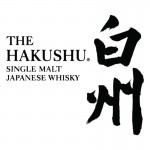Noble Rot Wine for Ladies

In the wine world, there is a kind of wine that does not belong to red wine, white wine, or sparkling wine, and this kind of wine is called "noble rot wine".
Noble rot wine originated from Hungary, and the world's three major noble rot wine producing regions are Tokaji in Hungary, Rheinga in Germany and Sauternes in Bordeaux in France. According to legend, the brewing method of this wine was introduced from Germany by the owner of Chateau La Tour Blanche in the Sauternes region around 1830. The noble rot wines of Sauternes are even more famous all over the world, and the well-known Château d’Yquem is located here.
Noble rot wine is a kind of wine made from grapes infected by Noble Rot. When the grapes are overripe, the mycelia of Noble Rot will break the skin of the grapes. After the water in the pulp evaporates, The grapes will gradually dry and shrink. At this moment, the grapes have a highly concentrated sugar content and a special taste produced when they are attacked by noble rot bacteria, with a very delicate aroma.
Noble rot is a strain with many restrictions on growth conditions. Let’s take Bordeaux Sauternes region of as an example, it is humid and foggy in the morning, which is conducive to the growth of noble rot, and warm and dry in the afternoon, which can inhibit the growth of noble rot. Brown, in which the water evaporates and sweetness and flavor substances accumulate. There are very few production areas that can meet this requirement, coupled with high costs, so production is very small.
Noble rot wine in golden yellow, sweet but not greasy, with fresh and lively aroma, with honey, peach, roasted almonds and small white flowers, sweet and full in the mouth, and the straight acidity makes the wine sweet but not greasy, rich in flavor and compact in structure. The aftertaste is sweet and long, whether it is an appetizer before a meal or a dessert after a meal, it is an excellent light and luxurious match. Due to the high sugar content of noble rot wine, it has a thick and plump sweetness. It tastes better after being chilled, and the temperature is about 5-8°C.



































